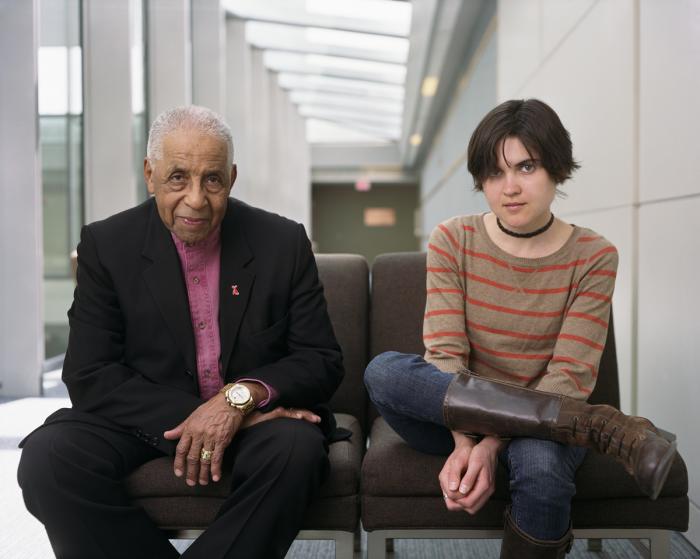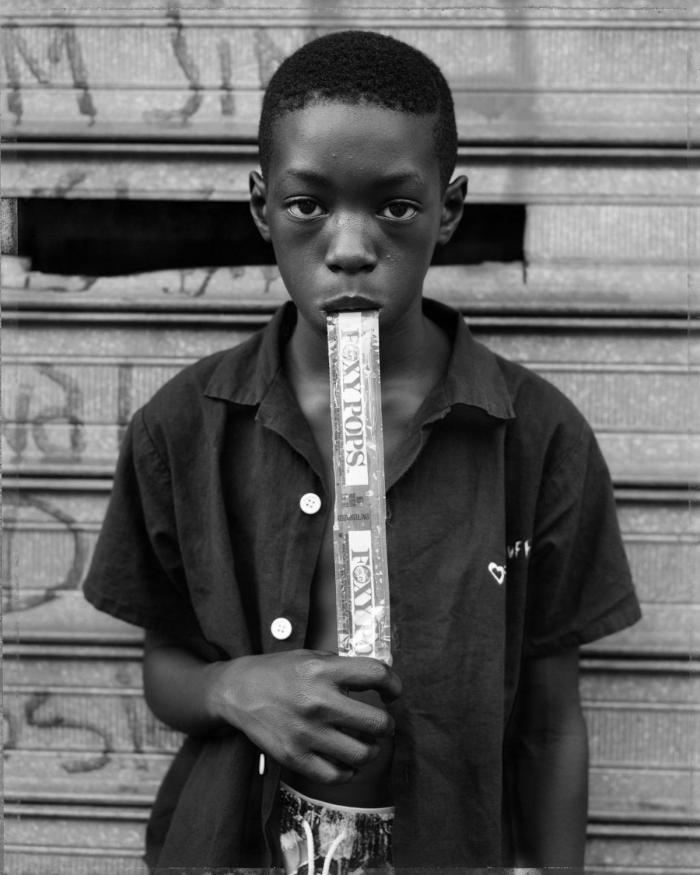Review of “Dawoud Bey: Picturing People”
Renaissance Society
University of Chicago
May 13th – July 13th, 2012
The Renaissance Society’s survey show of Dawoud Bey, featuring over thirty years of the artist’s portrait photography, closed this past Friday. Bey is known for street portraits that seem candid at first glance, but are actually taken with a view camera. Whether photographing subjects in a studio setting or after a chance encounter on a city street, Bey gains a level of comfort with the people he is photographing, engaging the viewer to interact with the people and contemplate their story. What also makes it easier to engage with Bey’s subjects are the beauty of the large prints, due to his skill with the view camera and the detail it provides.
“Picturing People,” includes several bodies of Bey’s known work and a new project as well. “Class Pictures” is a series of portraits of teenage students accompanied by text of the individual students speaking about their personal identities and school experiences. Bey’s photographs break the barrier between the viewer and the young people, making it easy to empathize with their struggles. The show also includes “Character Project,” Bey’s portraits of Columbia College Chicago students, but without accompanying text like “Class Pictures.” These seem to have less intimacy, and feel more like people watching at any art school (which is pretty interesting in itself).
“Strangers/Community” is the new project in the survey show, with each photo featuring two individuals living in the same community (Hyde Park), but who were strangers before posing for Bey. The idea for the project is compelling as a larger portrait of a neighborhood like many others across the country that is both diverse but not completely integrated. Hyde Park is often celebrated as an ideal of vibrant cultural diversity, but “Strangers/Community” challenges how often the diverse residents interact with people unlike themselves. Though the series is fascinating as an exploration of class and race segregation, how much it has improved and how it still has a long way to go, the images seem too formulaic: the people in each photo contrast in color, age, and perceived class, appear mostly stiff, making it clear they were asked to pose together. This stiffness is part of the point, but it makes it difficult to engage with the people since they are not engaged with each other and do little more than stare at the viewer.
For me, the strongest work is still Bey’s classic street portraits, due to the engagement with the subjects in their natural environments. They are at the same time average and extraordinary because of Bey’s skill in making the images seem effortless yet elegantly composed.
Though “Picturing People” is no longer on display at the Renaissance Society, Bey also has a small selection of his very early street photography taken in Harlem in the 1970s at the Art Institute of Chicago through September 9th: Dawoud Bey: Harlem, U.S.A. Also currently on view is a selection of work from the Art Institute’s permanent collection curated by Bey.
Post by Suzie

